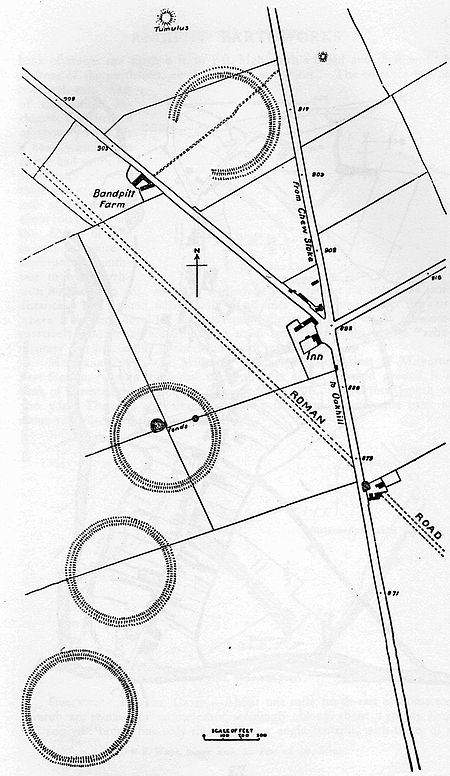Priddy Circles
Archaeological sites in SomersetBronze Age sites in SomersetBuildings and structures in Mendip DistrictHistory of SomersetMendip Hills ... and 3 more
Neolithic settlementsPopulated places established in the 3rd millennium BCScheduled monuments in Mendip District

Priddy Circles are a linear arrangement of four circular earthwork enclosures near the village of Priddy on the Mendip Hills in Somerset, England. The circles have been listed as Scheduled Ancient Monuments, and described as 'probable Neolithic ritual or ceremonial monuments similar to a henge'.The southernmost Priddy Circle falls on adjoining land to a house and stables that are owned by retired businessman Roger Penny. In 2012 Penny was fined £10,000 after the earthwork was damaged by work he had permitted.
Excerpt from the Wikipedia article Priddy Circles (License: CC BY-SA 3.0, Authors, Images).Priddy Circles
Plummer's Lane, Mendip
Geographical coordinates (GPS) Address External links Nearby Places Show on map
Geographical coordinates (GPS)
| Latitude | Longitude |
|---|---|
| N 51.272480555556 ° | E -2.6607916666667 ° |
Address
Priddy Circles
Plummer's Lane
BA5 3DB Mendip
England, United Kingdom
Open on Google Maps









